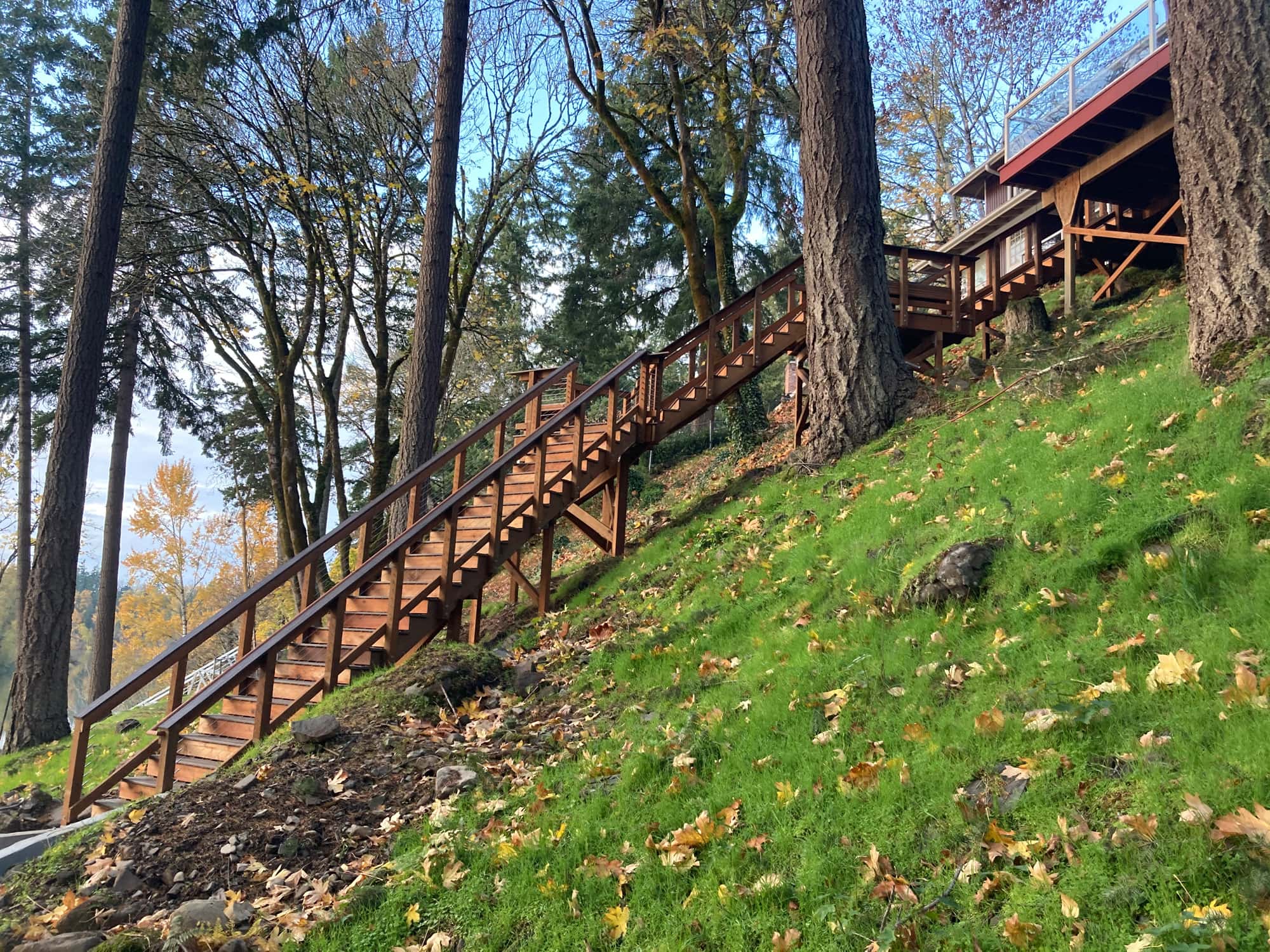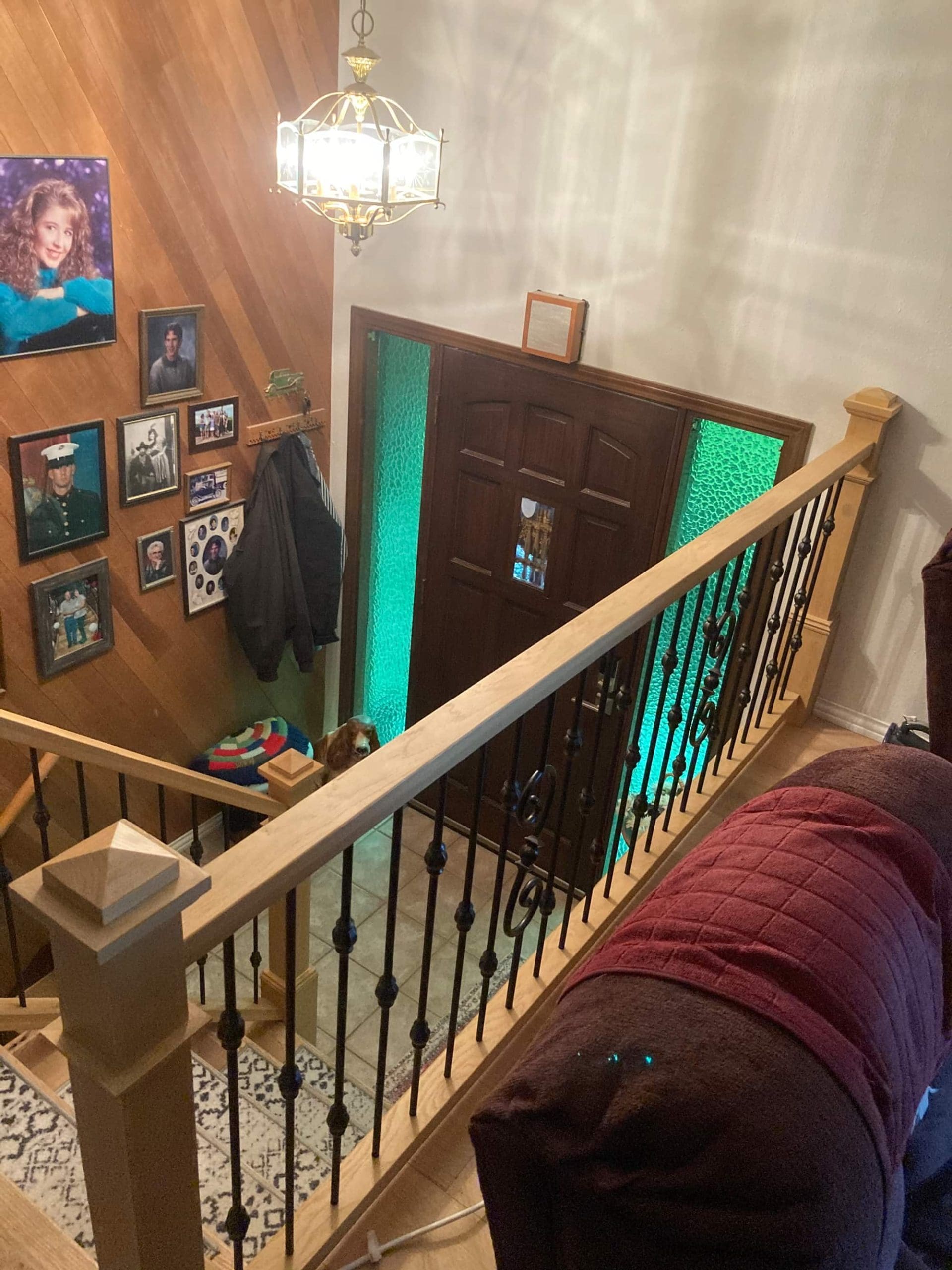Classic Wood Staircases: Timeless Designs & Expert Tips
Classic wooden staircases exude timeless elegance and charm, adding a touch of sophistication to any home. Whether you are renovating or building from scratch, the allure of classic wooden staircases indoors is undeniable.
From traditional to modern interiors, classic wooden staircases seamlessly integrate with diverse decor schemes, offering both functionality and aesthetic pleasure. We will also explore maintenance tips to preserve their beauty for years to come. Join us as we unravel the enchanting world of classic wooden staircases and discover how they can elevate the ambiance of your living space.
Read more
The Beauty of Turned Newels and Spindles in Classic Staircases
Enhancing Visual Interest
Classic wood staircases are elevated by the addition of turned newels and spindles. These intricate details create a captivating visual impact, elevating the overall aesthetic appeal. The detailing on these components adds depth and character to the staircase, making it a focal point within any home.
The craftsmanship involved in creating turned newels, spindles, and stair is truly remarkable. Each piece is carefully shaped and designed to fit seamlessly into the staircase structure. This level of detail enhances not only the appearance but also the quality of classic wooden staircases.
Timeless Artisanal Appeal
Classic staircases with turned newels and spindles exude an undeniable timeless charm that resonates with artisanal craftsmanship. The careful attention to detail in crafting these elements results in a staircase that becomes more than just a functional feature; it becomes a work of art within the home.
The incorporation of stair turned newels and spindles serves as a testament to traditional woodworking techniques, showcasing an appreciation for heritage and enduring beauty. It’s this combination of historical significance, skilled artisanship, and timeless allure that sets classic wooden staircases apart from other design options.
Continuous Handrails Enhancing Classic Wood Staircases
Timeless Appeal
Continuous handrails are an essential element in classic wood staircases, offering a seamless and elegant touch. The uninterrupted lines of continuous handrails contribute to the timeless allure of classic wood staircases, enhancing their visual appeal. By following the natural curve of the staircase, these handrails create a sense of flow and harmony, adding to the overall aesthetic charm.
The continuous nature of these handrails allows for a smooth transition as individuals ascend or descend the stairs. This provides not only a functional benefit but also adds to the visual appeal by creating an uninterrupted line along the length of the staircase. Imagine walking up a set of stairs with no breaks in sight — this is precisely what continuous handrails offer, elevating both form and function.
Compliance with Building Regulations
Incorporating continuous handrails into classic wooden staircases ensures compliance with building regulations regarding safety and accessibility. These regulations often require that handrails be present on both sides of a staircase for support and guidance. Continuous handrails fulfill this requirement seamlessly while maintaining an aesthetically pleasing appearance.
Moreover, they provide additional support compared to segmented or interrupted designs since there are no gaps where individuals might lose balance or grip. This enhances safety without compromising on style or elegance.
Visual Continuity
One notable advantage is how continuous handrails enhance visual continuity throughout the entire staircase structure, from top to bottom. They create a cohesive look that complements other elements such as turned newels and spindles discussed earlier, contributing to an overall harmonious design scheme.
The Sophistication of Classic Painted Balustrades
Traditional Elegance
Classic wood staircases exude traditional elegance, and when paired with painted balustrades, they achieve a sophisticated yet timeless look. The combination of natural wood and painted balustrades creates a striking visual contrast that elevates the overall aesthetic appeal of the staircase. This classic design choice has been favored for generations due to its ability to seamlessly blend with various interior styles.
The addition of painted balustrades offers an opportunity to infuse personalized color accents into the staircase design. Whether it’s a pristine white or a bold, contrasting hue against dark wooden stairs, the painted balustrades serve as a canvas for creativity. Homeowners can choose colors that complement their existing interior decor or make a statement with vibrant shades that add character to the space.
The versatility of classic painted balustrades allows homeowners to tailor their staircase design according to their preferences while maintaining its timeless allure. By incorporating this feature into their homes, individuals can express their personal style through subtle yet impactful details within their living spaces.
Visual Impact
When set against dark wooden staircases, white-painted balustrades create an eye-catching visual impact that draws attention to the intricate details of the staircase structure. The stark contrast between dark wood and bright paint highlights each element, contributing to an aesthetically pleasing composition within the home environment.
In rooms adorned with white walls, classic wooden staircases featuring painted balustrades stand out as focal points in interior design. The clean lines and elegant finish offered by these elements elevate the overall ambiance of any space while adding depth and dimension to its architectural features.
Sapele Handrails in Timeless Staircase Design
Rich Appearance
Classic wood staircases exude timeless elegance and charm, and the addition of sapele handrails elevates their aesthetic appeal. The distinct grain patterns and deep tones of sapele wood bring a rich, luxurious appearance to traditional staircase designs. This type of wood is known for its stunning reddish-brown color with darker ribbon stripes, adding warmth and character to any wooden staircase.
Sapele handrails are highly sought after for their ability to enhance the elegance of classic staircases. The natural beauty of sapele wood complements various interior styles, from traditional to modern. Its lustrous finish further accentuates the sophistication of wooden stairways, making it a popular choice among homeowners seeking a touch of opulence in their homes.
Opulence and Sophistication
The incorporation of sapele handrails into classic wooden staircases adds a touch of opulence and sophistication that stands the test of time. Whether paired with intricately carved balusters or sleek, minimalistic railings, sapele handrails effortlessly elevate the overall look and feel of the staircase. The deep tones and unique grain patterns create an air of luxury that enhances the grandeur associated with classic stairway designs.
Homeowners looking to infuse their interiors with an element of grandeur often turn to sapele handrails as they offer both visual appeal and durability. As part of a well-crafted wooden staircase, sapele handrails not only provide functional support but also serve as an exquisite focal point within the home’s architectural composition.
Signature Classic Feature Steps in Wooden Staircases
Elevating Visual Impact
Classic wood staircases are known for their timeless charm and elegance. However, to add a unique character and elevate the visual impact of these staircases, incorporating signature feature steps is essential. These feature steps, such as curved or flared treads, serve as focal points that showcase the craftsmanship and artistry of classic staircase design.
The addition of curved or flared treads not only enhances the aesthetic appeal but also adds individuality to each staircase. For instance, a gracefully curved step at the base of the staircase can create a grand entrance, leaving a lasting impression on anyone entering the space. Similarly, flared treads can bring an element of drama and sophistication to the overall design. These distinctive features draw attention to the staircase as a work of art within a home’s interior.
Incorporating signature feature steps is akin to adding personalized touches that reflect one’s taste and style. Just like how Sapele handrails exude luxury and warmth in timeless staircase designs (as discussed in the previous section), these unique steps contribute significantly to creating an inviting ambiance while making a bold statement about architectural refinement.
Showcasing Craftsmanship
By integrating signature feature steps into classic wooden staircases, homeowners have an opportunity to highlight exceptional craftsmanship. The intricate detailing involved in designing curved or flared treads demonstrates unparalleled skill and precision required for such custom work.
For example:
-
A spiral staircase with elegantly curved treads showcases superior woodworking expertise.
-
Flared treads leading up to an upper level accentuate meticulous attention to detail.
These features not only capture attention but also emphasize the dedication put into creating each step—a testament to artisanal excellence that defines classic wooden staircases.
Moreover, by serving as focal points within home interiors, these distinct elements become conversation starters—inviting admiration for their artistic value while complementing other design elements present in homes’ living spaces.
Expert Tips for Choosing Classic Staircase Designs
Architectural Style Consideration
When choosing classic wood staircases, it’s crucial to consider the architectural style of your home. This ensures a seamless integration that enhances the overall aesthetic appeal. For instance, if you have a traditional or Victorian-style home, a grand staircase with intricate wooden balusters and handrails would complement the design beautifully. On the other hand, if your home has a more modern or minimalist architecture, a sleek and simple staircase design with clean lines and minimal embellishments may be more suitable.
It’s essential to select a classic staircase that complements rather than clashes with the existing architectural elements in your home. By doing so, you create an elegant and harmonious transition from one floor to another while maintaining the timeless charm of classic wood staircases.
Prioritize Quality Materials and Craftsmanship
When investing in classic wood staircases, prioritizing high-quality materials and craftsmanship is paramount. Opting for solid hardwoods such as oak, maple, or cherry ensures durability and longevity. These materials are not only robust but also exude natural warmth and beauty that can elevate any space.
Moreover, paying attention to craftsmanship is key to achieving an enduring appeal for your classic staircase. Intricately carved newel posts or finely detailed balusters showcase superior artistry that adds character to the entire staircase structure. Investing in well-crafted classic wood staircases not only guarantees longevity but also becomes an exquisite focal point within your home.
Consultation with Experienced Professionals
Consulting experienced professionals when considering customization options for classic wood staircases can help bring your vision to life effectively. Skilled craftsmen can offer valuable insights into tailoring designs based on specific preferences while ensuring structural integrity.
Collaborating with professionals allows exploration of various customization options such as unique railing designs or personalized carving details on wooden components like newel posts or tread edges. This consultation process facilitates the creation of bespoke classic wood staircases that resonate with individual tastes while upholding timeless elegance.

The Timelessness of Classic Wooden Staircase Designs
Elegance and Charm
Classic wooden staircases have stood the test of time, exuding timeless elegance and charm. /// Their enduring appeal has made them a classic choice for generations. The natural beauty of wood brings warmth and tradition to any home, making it a popular option for those seeking a touch of classic sophistication.
Wooden staircases are versatile, offering various design options to suit different architectural styles. From sleek and modern to ornate and traditional, wooden staircases can be customized to complement any interior aesthetic. The use of high-quality woods such as oak, maple, or cherry further enhances their timeless appeal.
The durability of wooden staircases is another key factor in their continued popularity. When properly maintained, wooden steps can last for decades without losing their visual appeal or structural integrity. This longevity makes wooden steps an excellent investment for homeowners looking for a lasting feature that adds value to their property.
Senior Father’s Choice
For many older adults like your senior father, classic wooden staircases hold sentimental value due to their association with cherished memories from the past. These staircase designs evoke nostalgia and comfort while providing a sense of familiarity that resonates with individuals who appreciate traditional craftsmanship.
Moreover, wooden staircases offer practical benefits such as sound absorption and easy maintenance compared to other materials like metal or glass. They also provide a sturdy foundation underfoot, instilling confidence in users regardless of age or mobility challenges.
Traditional Wooden Staircase Materials and Their Charm
Popular Wood Choices
Oak, maple, and cherry are popular choices for classic wood staircases. These materials are favored for their natural beauty, durability, and timeless appeal.
These materials stand out due to their sturdiness and elegance. For instance, oak is known for its strength and resistance to wear, making it an ideal choice for high-traffic areas like staircases.
Timeless Appeal
The natural beauty of traditional wooden staircase materials adds a touch of warmth and sophistication to any home. The rich tones of these woods create a welcoming atmosphere while exuding a sense of timeless charm.
Classic wood staircases have the ability to elevate the overall aesthetic of a home by infusing it with a sense of tradition and elegance. The enduring appeal of these materials ensures that they remain in style regardless of evolving design trends.
Character and Sophistication
Traditional wooden staircase materials bring character to interior spaces through their unique grain patterns, textures, and finishes. Each type of wood offers distinct visual characteristics that contribute to the overall ambiance of the home.
For example:
-
Oak’s prominent grain pattern adds depth and texture to the staircase.
-
Maple’s smooth surface provides an elegant backdrop for any interior decor.
-
Cherry’s warm tones impart a sense of luxury and refinement.
Incorporating Classic Stairway Decor for Elegance
Elevating Aesthetic Appeal
Classic wood staircases can be transformed into elegant focal points by incorporating classic decor elements. The addition of ornate railings and intricate carvings elevates the elegance of wooden staircases, enhancing their overall aesthetic appeal. For instance, a beautifully carved wooden railing with delicate details can instantly elevate the visual impact of a traditional staircase, adding an air of sophistication to the space.
Adding classic decor such as decorative newel posts and finials further enhances the grandeur of wooden stairways. These decorative elements not only add visual interest but also bring a sense of history and tradition to the staircase. Imagine a stunning newel post adorned with intricate carvings or an eye-catching finial crowning the top of the staircase – these timeless embellishments contribute to creating a truly majestic entryway.
Grandeur and Sophistication
Incorporating classic decor brings a sense of grandeur and sophistication to wooden stairs indoors. By embracing traditional design elements, such as elegantly curved handrails or intricately designed balusters, and stairs, homeowners can infuse their living spaces with timeless charm and elegance. Picture an exquisitely crafted banister and finely detailed spindles – this combination adds an undeniable touch of luxury to any home.
The use of classic decor in wooden staircases extends beyond mere functionality; it becomes a statement piece within the home’s interior design scheme. Moreover, when paired with complementary furnishings and lighting fixtures, these refined stairway adornments create an inviting atmosphere that reflects both warmth and opulence.
-
Adding ornate railings elevates elegance
-
Decorative newel posts enhance grandeur
-
Infusing spaces with timeless charm
Closing Thoughts
The classic wooden staircase designs discussed in the preceding sections exude timeless elegance and charm. From traditional materials to intricate details like turned newels and spindles, each element contributes to the sophistication of these staircases. Whether incorporating classic decor or opting for painted balustrades, the beauty of these designs is undeniable. The expert tips provided offer valuable insights for those considering a classic staircase for their space.
For those seeking to infuse their homes with enduring style and grace, embracing classic wood staircase designs can be a rewarding endeavor. By carefully selecting materials, paying attention to details, and drawing inspiration from the discussed elements, individuals can create staircases that stand the test of time while adding a touch of refinement to their surroundings.
FAQs
What are the benefits of classic wooden staircases?
Classic wooden staircases offer timeless elegance, durability, and a warm aesthetic appeal to any space. They can be customized to fit various architectural styles and provide a sense of tradition and craftsmanship.
How do turned newels and spindles enhance classic staircases?
Turned newels and spindles add intricate detailing and visual interest to classic staircases. Their ornate designs create a traditional look that complements the overall charm of wooden stairways, enhancing their aesthetic appeal.
Why are sapele handrails popular in timeless staircase design?
Sapele handrails are favored for their rich color, lustrous finish, and exceptional durability. They add an elegant touch to classic staircase designs while offering resistance to wear and tear, making them an ideal choice for long-lasting beauty.
What should one consider when choosing classic staircase designs?
When selecting classic staircase designs, factors such as architectural style, available space, desired aesthetics, maintenance requirements, safety regulations compliance should be considered. It’s essential to find a balance between functionality and visual appeal.
How can continuous handrails enhance classic wood staircases?
Continuous handrails not only provide safety but also contribute to the seamless flow of the staircase design. They offer support throughout the entire length of the stairs while adding a sleek and sophisticated touch to classic wood staircases.
Stumptown Stairs
Get In Touch
Stumptown Stairs
CCB #218207
Making Stairs for the Greater Portland Area & Beyond
Operating Hours
M-F: 8am - 6pm
Sat: By appointment
Sun: Closed

